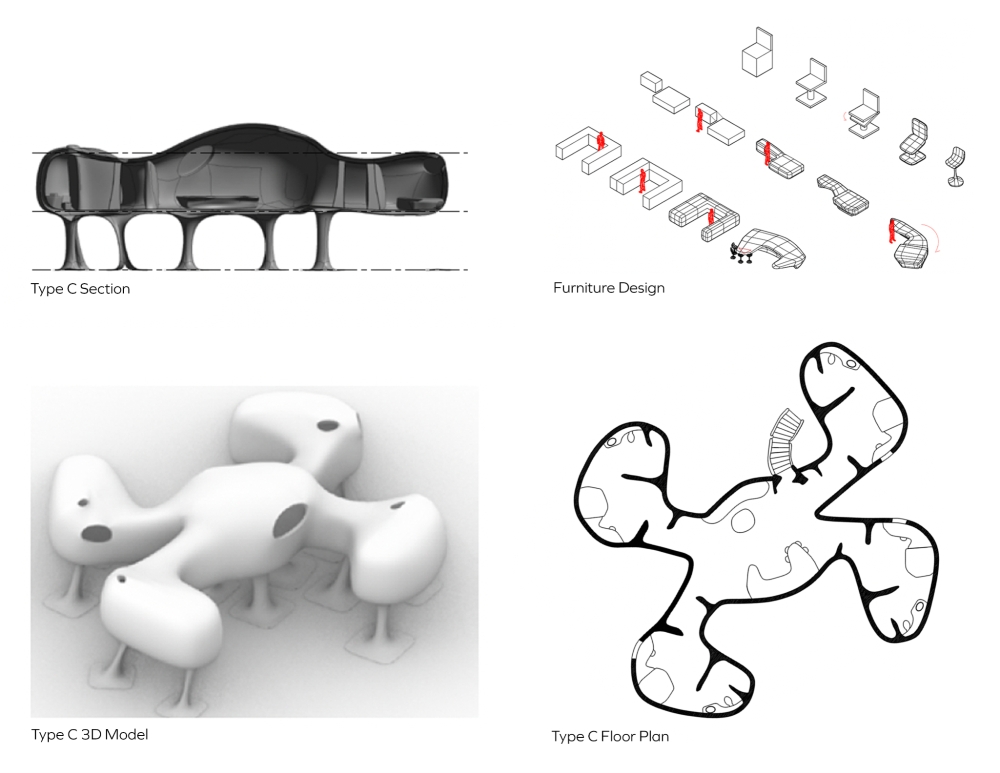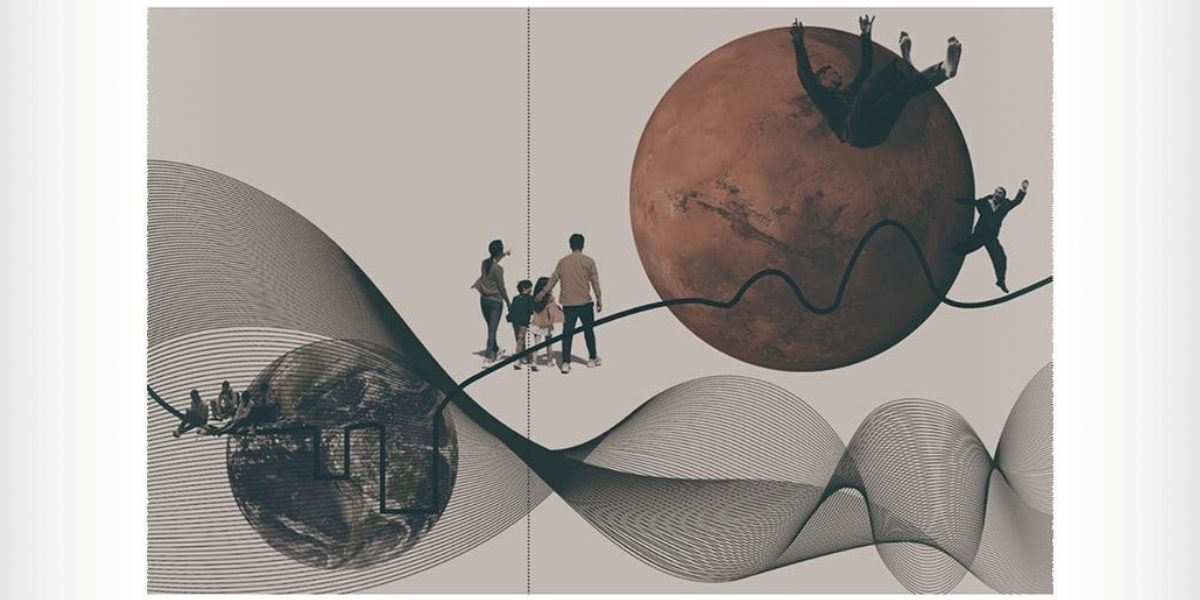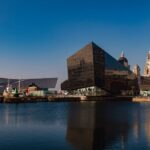By: Jaxon Lee
A Design Born from Earth’s Crisis
The Master’s thesis Red Refuge: Living on Mars by Chohyun Kim begins with a fundamental question: “How can interior designers create life in space?” The project was inspired by growing awareness of the planetary crisis threatening human survival.
Climate change, pollution, resource depletion, overpopulation, and intensifying natural disasters are reshaping life on Earth. The planet’s average temperature has risen by about 1.1°C since pre-industrial levels, sea levels continue to rise, and extreme weather events are occurring more frequently. Millions die each year due to air pollution, while glaciers melt at an accelerating rate.
While researching these conditions, Kim asked: “If Earth one day becomes uninhabitable, where will humanity go?” Red Refuge was conceived as an answer to that question — not merely a design for survival, but a framework for creating psychologically and environmentally sustainable living spaces beyond our planet.
“Design today remains on Earth, but design for tomorrow must imagine where humanity will live next.”
Mars: Humanity’s Next Frontier
Among all planets, Mars remains the most viable candidate for future migration. Its gravity is roughly 38% that of Earth, its thin atmosphere is composed mainly of carbon dioxide, and its average temperature drops below −60°C. Solar irradiance reaches only about 60% of Earth’s, and the lack of a magnetic field exposes the surface to high radiation.
Despite these challenges, Kim emphasizes the need to focus not only on engineering survival, but also on designing quality of life.
“Interior design is not merely about constructing structures — it is about shaping human emotion.”
From Survival to Living
Previous experiments, such as NASA’s HI-SEAS and Mars-500 missions, have focused on efficiency and function, often overlooking the impact of human emotions. The result was sterile, enclosed spaces that led to monotony, anxiety, and psychological fatigue among participants.
In contrast, Red Refuge proposes spaces that nurture emotional balance and human connection. Curved architecture, biophilic elements, natural-light simulation, and communal “play and interaction” zones bring vitality into confined environments, helping residents feel alive — not trapped.

Designing with Local Resources
Transporting materials from Earth is impractical. Kim explores using Martian basalt, volcanic ash, and sulfur-based concrete to 3D-print habitat structures directly on the planet’s surface. This method minimizes transport costs while improving insulation and radiation protection. These materials have shown promising results in simulation studies, though in-situ mining, refining, and energy efficiency remain future engineering challenges.
Power would come from radioisotope thermoelectric generators (RTGs) combined with solar panels, ensuring a stable energy supply under variable sunlight conditions.
For food production, Kim integrates insect protein, cultured meat, and LED-based hydroponics into a closed-loop system. While these technologies have proven feasible, large-scale efficiency and nutrient recycling optimization remain active areas of research.
Additionally, Kim considers how architectural structure and form can influence psychological well-being in extreme environments. Under the assumption that conventional doors may be difficult to construct in a Martian habitat due to pressure differences and material limitations, she proposes raising the building on pillars, allowing residents to walk beneath the structure. This elevated design enhances privacy and psychological stability, while also offering a rare spatial experience of openness and light. People moving underneath the elevated habitat can receive filtered sunlight with reduced radiation exposure, as the building itself acts as a partial barrier. In an environment where residents spend almost all their time indoors, such an experience provides variety, movement, and visual dynamism, breaking the monotony of closed living.
Designing for Connection
Isolation is one of the greatest psychological risks in extraterrestrial living. To counter this, Kim adopts a cluster-housing concept — private units connected to shared kitchens, dining spaces, and lounges that encourage spontaneous interaction.
Furniture is lightweight and wall-integrated through 3D printing, featuring smooth, rounded forms that reduce tension and minimize injury risk in low-gravity environments. Lighting is carefully calibrated to regulate circadian rhythms, changing color temperature and brightness throughout the day to mimic Earth’s day–night cycle and support mental health.
The Role of Interior Designers in Space Development
Kim believes interior designers have a vital role to play in shaping extraterrestrial living environments.
Her research reminds us that space habitation is not purely an engineering challenge but equally a matter of human adaptation and emotion. Technology enables survival; design enables living.
Returning to Earth
Ultimately, Red Refuge reveals that designing for Mars is also designing for Earth. The principles of sustainability, emotional well-being, and human-centered design developed for life in extreme environments can guide the future of cities on our own planet.
“Design for Mars is, in essence, design for humanity. Whether on Earth or beyond, our purpose as designers is to make life more human.”


















